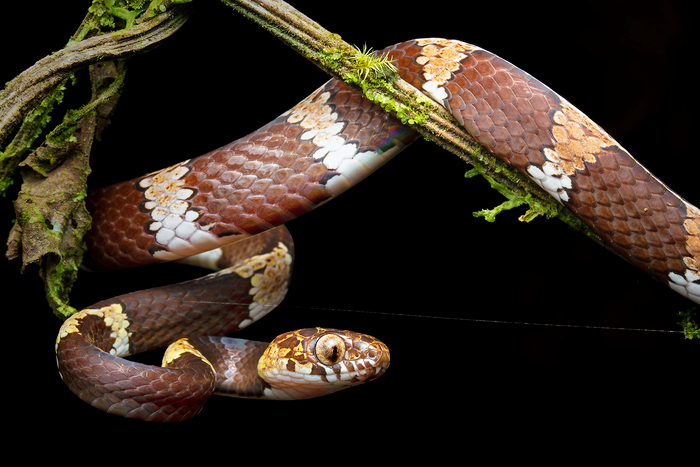
South American snakes threatened by mining activities
A new study published in the journal ZooKeys has recently described five new species of tree-dwelling snakes in the jungles of Ecuador, Colombia, and Panama. Famous environmental activists such as Leonardo DiCaprio and Brian Sheth, along with organizations like Re:wild, and Nature and Culture International, chose the names for three of these species in honor of loved ones, while raising public awareness about rainforest destruction caused by (often illegal) open-pit mining operations.
The mountainous regions of the upper-Amazon rainforest and the Chocó-Darién jungles are home to a huge diversity of snake species. Unfortunately, during the Covid-19 pandemic, the proliferation of illegal open-pit gold and copper mining has reached critical levels and is now significantly threatening tree-dwelling snake populations.
Since neotropical snail-eating snakes such as those belonging to the genera Sibon and Dipsas are arboreal and cannot survive in areas devoid of vegetation, they are particularly prone to the negative effects of open-pit mining. Moreover, because they feed exclusively on snails and slugs – a type of prey occurring mostly along rivers and streams that is currently threatened by water pollution – they livelihood is even more endangered.
“When I first explored the rainforests of Nangaritza River in 2014, I remember thinking the place was an undiscovered and unspoiled paradise,” said study lead author Alejandro Arteaga, a researcher at the Biodiversity Field Lab in Ecuador. “In fact, the place is called Nuevo Paraíso in Spanish, but it is a paradise no more. Hundreds of illegal gold miners using backhoe loaders have currently taken possession of the river margins, which are now destroyed and turned into rubble.”
Since illegal miners are proliferating, ignoring landowner rights and even threatening anyone opposed to the extraction of gold or copper, the presence of conservation areas is no longer sufficient to help protecting endangered species. However, even when the mining operations are legal, such as in Panama, large-scale copper mining is critically affecting the habitat of two snake species (Sibon irmelindicaprioae and S. canopy).
“Both legal and illegal open-pit mines are uninhabitable for the snail-eating snakes, but the legal mines may be the lesser of two evils. At the very least they respect the limit of nearby protected areas, answer to a higher authority, and are presumably unlikely to enact violence on park rangers, researchers, and conservationists,” Arteaga explained.
“These new species of snake are just the tip of the iceberg in terms of new species discoveries in this region, but if illegal mining continues at this rate, there may not be an opportunity to make any future discoveries.”
Fortunately, three NGOs in Ecuador and Panama (Khamai, Nature and Culture International, and Adopta Bosque) have already started actions to safeguard the snakes’ habitat from mining operations. Since their quest for urgent land protection seems to be the only method of saving these snakes from extinction, providing international support for these organizations is vital.
Image Credit: Alejandro Arteaga
—-
By Andrei Ionescu, Earth.com Staff Writer
Check us out on EarthSnap, a free app brought to you by Eric Ralls and Earth.com.













